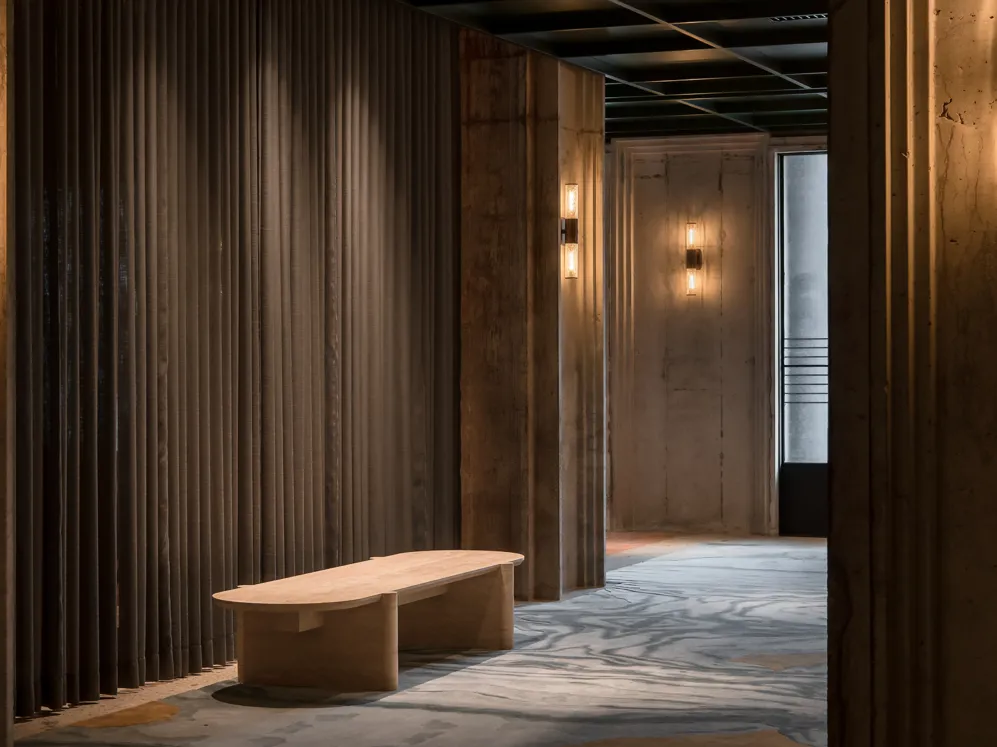
Words Vidula KotianDate 10 September 2025
With a hands-on, thoughtful approach, they transform everyday environments into moments of discovery, weaving history, craft, and emotion into every project. Their latest project, our newest member hotel in Malaysia, Else Kuala Lumpur in Chinatown, embodies this ethos—a space that is alive, intimate, and deeply connected to its surroundings. We spoke to Farah and Adela on how their Malaysian upbringing, design philosophy, and collaborative spirit shape the stories they tell through architecture.

Adela Askandar
Adela: We met at the Architecture Association in 2004 through a mutual friend. Farah returned to Kuala Lumpur and worked in landscape architecture for six years, but she missed working on spatial design and architecture. At the same time, I was freelancing, and in 2008 we collaborated on a small interior project. We enjoyed the creative dynamic so much that three years later, I joined Farah, who had started Studio Bikin from her home—and that was the start of it all!
Adela: Growing up in Malaysia, we were naturally immersed in a mix of cultures, histories, and ways of living. This shaped how we see spaces—as layered, adaptable, and alive. We believe architecture should breathe with its surroundings, whether through climate responsiveness, traditional craft, or the social rhythms of everyday life. Design becomes a way to tell these stories, whether through the play of light, the choice of materials, or how a space invites people to gather. Our projects are less about imposing a style and more about weaving familiar fragments into new conversations.
Farah Azizan
Farah: Else allowed us to extend our design thinking beyond individual spaces to the entire guest experience. From the outset, it wasn’t about creating a showpiece hotel, but crafting a sanctuary rooted in its context—Kuala Lumpur’s historic city core. We embraced the building’s existing structure, imperfections, and history, layering in materials, textures, and moods that evoke quiet luxury. What makes Else distinct is its scale: larger than our typical projects yet approached with the same care and attention to detail as a home. Every corner was considered for how it would feel, sound, and age over time. Rather than imposing an aesthetic, we aimed to create a living, breathing environment that feels personal, connected, and timeless.
Farah: Chinatown is in constant flux, where old and new coexist and traditions adapt to the present. Rather than mimic its aesthetics, we responded to its atmosphere. Instead of loud gestures, we focused on creating calm within the city’s energy—a kind of urban retreat where guests can experience Kuala Lumpur’s vibrancy and then step into a quieter, more introspective space. We collaborated closely with local artisans and makers, weaving in subtle details that reflect the area’s crafts and materials. Else doesn’t replicate Chinatown; it echoes its rhythms—you feel it in the textures, in the way light moves through the spaces, and in the small, human touches that make the experience grounded and intimate.
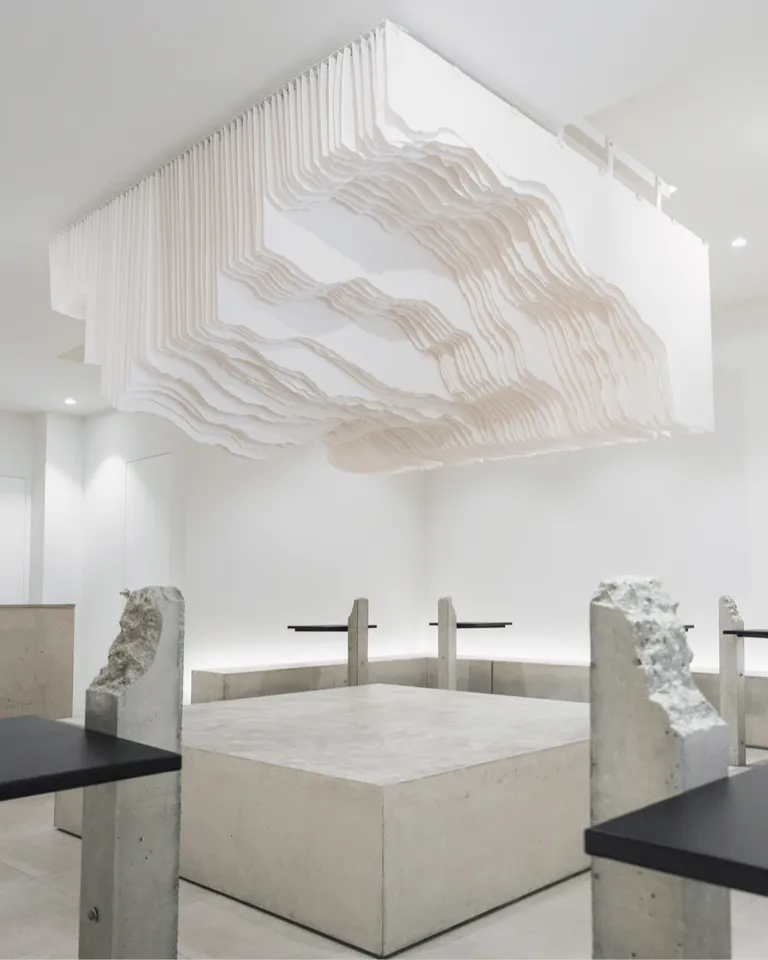
At Niko Neko Matcha, a central concrete seat anchors the monochrome space, with a paper installation by Sarah Rahman in the spotlight. Photo © Niko Neko Matcha

An architectural element frames the bar at Reborn Coffee, while terracotta, walnut tones, and custom solid walnut furniture warm the dining space. Photo © Okokon Space
Adela Askandar
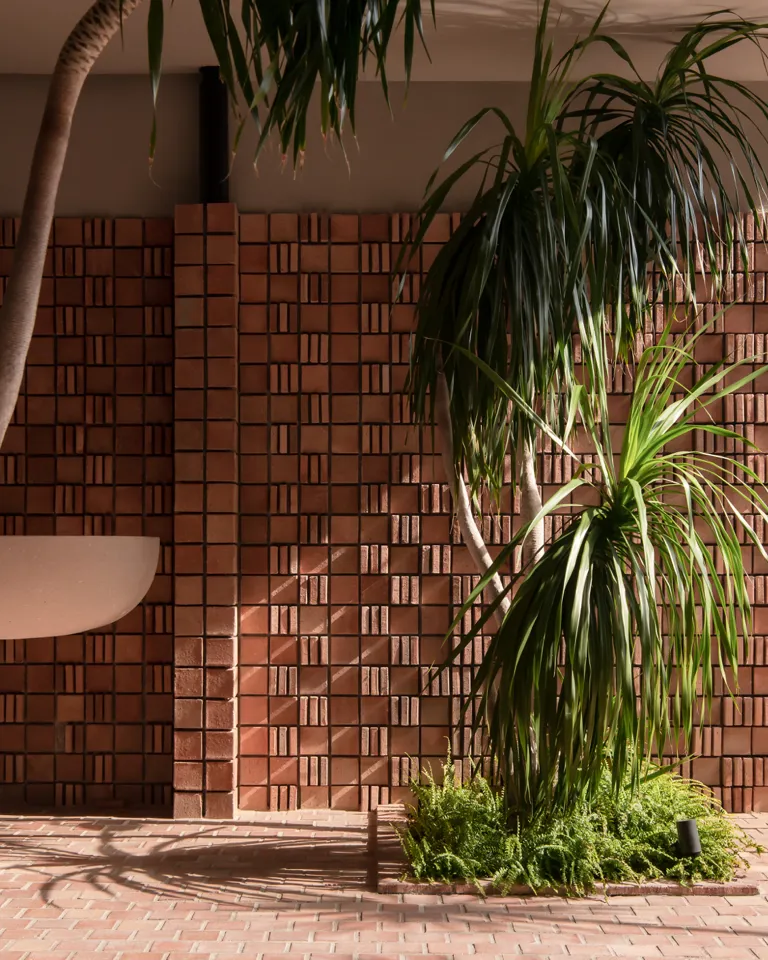
Else’s pool area features bespoke bricks, handcrafted by local artisans. Photo © David Yeow

Adela: Materials carry memory, texture, and emotional resonance. We’re drawn to those that age gracefully, revealing stories through their imperfections. Whether timber, stone, or handmade tiles, we value surfaces that develop a patina over time and feel tactile and grounded. Materials also shape how light, temperature, and even sound are experienced, influencing the way people sense and move through a space. We’re less concerned with materials as visual statements and more with their ability to evoke mood, atmosphere, and a distinct sense of place.
Farah: “Bikin,” is about doing, making, experimenting, not just theorizing. This hands-on ethos is vital in Malaysia, where design is often an act of negotiation: with climate, budgets, and cultural context. A growing community of designers, architects, and makers is celebrating local craft in contemporary ways. To truly flourish, however, the scene needs stronger support structures—platforms for collaboration, education, and dialogue. There’s immense talent here, and connecting designers with artisans, developers, and an audience that values thoughtful, place-sensitive design will help the community thrive.
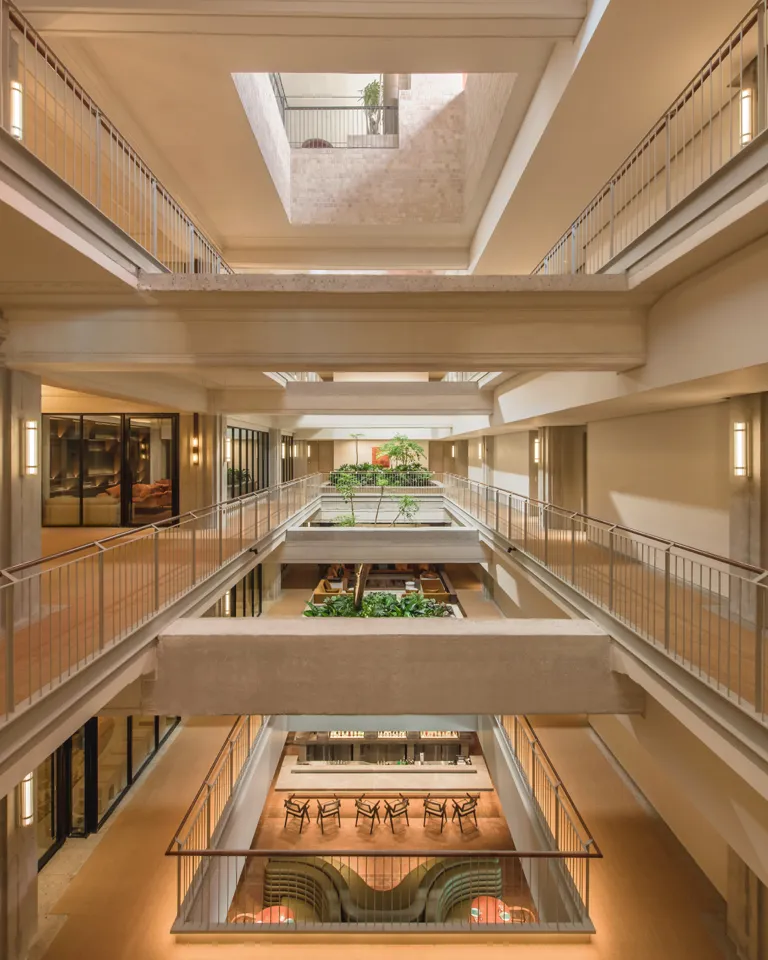
Multi-level atriums at Else flood the corridors leading to the hotel rooms with natural daylight. Photo © David Yeow
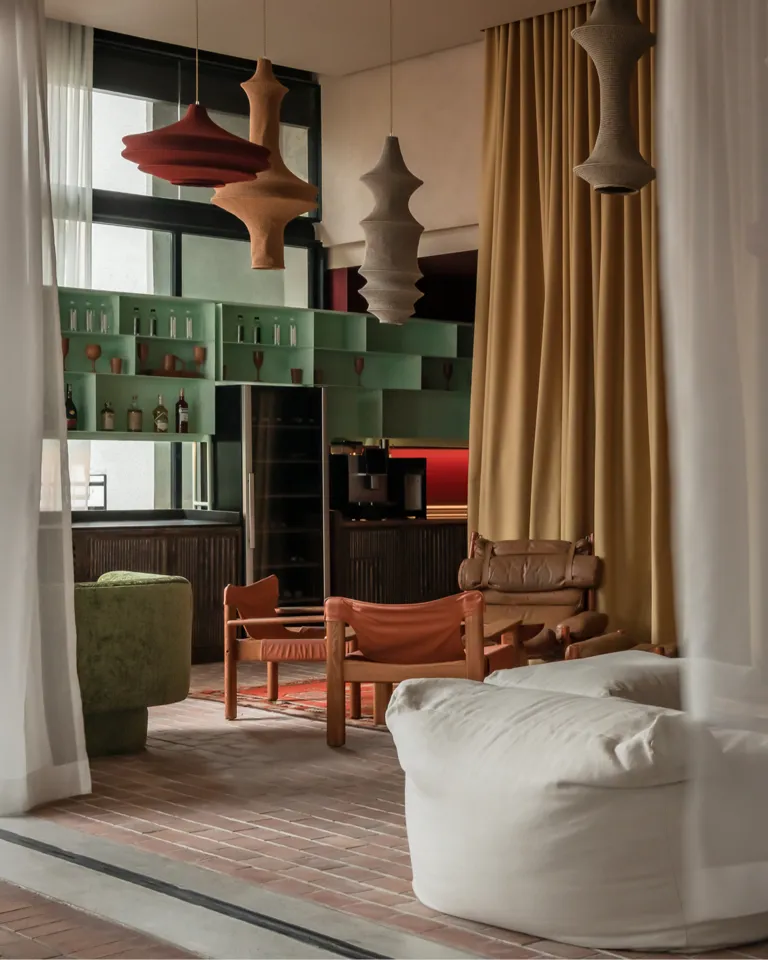
The design embraces duality — past and present, light and dark, raw yet refined — shaping the hotel’s interiors to reflect contrasts. Photo © David Yeow
Adela: Happiness is when things feel aligned—working with people you trust, enjoying a fulfilling process, and savoring simple joys: a good meal with family and friends, quiet time in nature, or watching light shift across a space you’ve designed. It’s found in fleeting, balanced moments.
Farah: I’m not sure there’s a single “perfect” happiness. For me, it’s when all the things I value—work, relationships, surroundings—come together like a well-balanced ecosystem. Feeling nourished rather than drained, creating with purpose, moving through life with energy, connecting and laughing with people who matter, and enjoying small sensory pleasures in spaces, food, travel, and company.
Adela: I value friends who are candid and uplifting, who show up fully and share their time and energy without expecting anything in return.
Farah: I treasure friends who accept and celebrate you, quirks and all—open-minded, supportive, and completely non-judgmental.